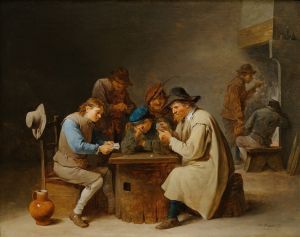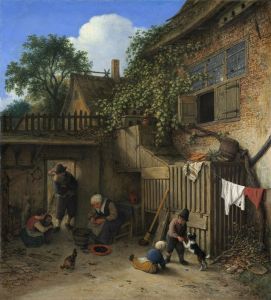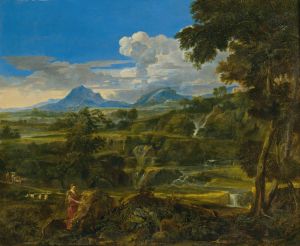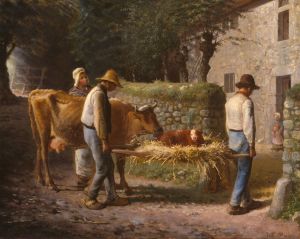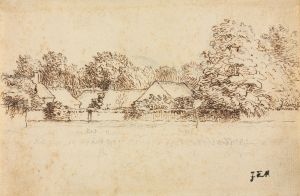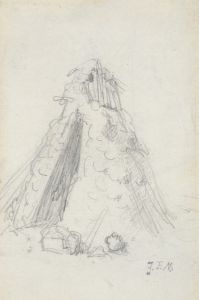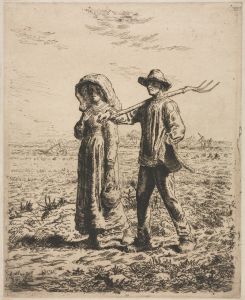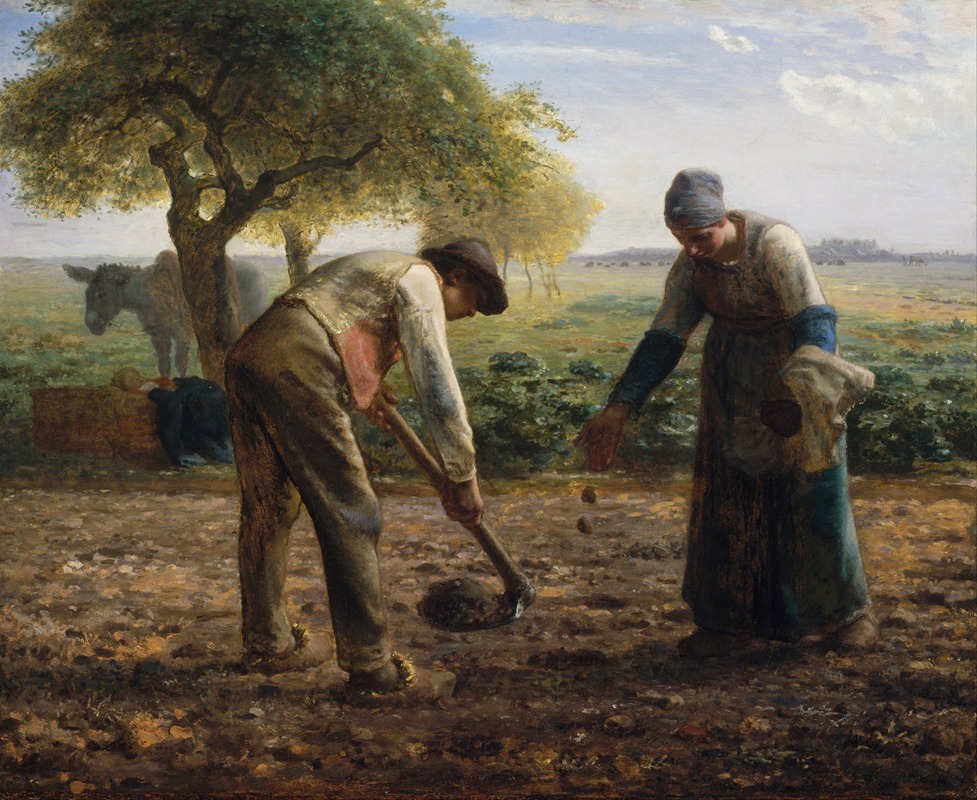
Potato Planters
A hand-painted replica of Jean-François Millet’s masterpiece Potato Planters, meticulously crafted by professional artists to capture the true essence of the original. Each piece is created with museum-quality canvas and rare mineral pigments, carefully painted by experienced artists with delicate brushstrokes and rich, layered colors to perfectly recreate the texture of the original artwork. Unlike machine-printed reproductions, this hand-painted version brings the painting to life, infused with the artist’s emotions and skill in every stroke. Whether for personal collection or home decoration, it instantly elevates the artistic atmosphere of any space.
"Potato Planters" is a painting by the renowned French artist Jean-François Millet, created in 1861. Millet was a pivotal figure in the Realism movement, which emerged in the mid-19th century as a reaction against the Romanticism that had dominated European art. Realism focused on depicting everyday life and ordinary people with a sense of authenticity and truthfulness, often highlighting the struggles and dignity of the working class.
Millet was born in 1814 in the village of Gruchy, Normandy, and his rural upbringing significantly influenced his artistic focus. He is best known for his depictions of peasant life, and "Potato Planters" is a quintessential example of this theme. The painting portrays two peasants working in a field, planting potatoes. The figures are shown in a bent posture, emphasizing the physical labor involved in their task. This representation aligns with Millet's consistent interest in the lives of rural workers and his commitment to portraying them with respect and empathy.
The composition of "Potato Planters" is marked by its simplicity and directness. Millet's use of earthy tones and a muted color palette reflects the natural environment and the humble subject matter. The figures are solid and monumental, occupying the foreground of the painting, which draws the viewer's attention to their activity and presence. The background is relatively sparse, with a horizon line that suggests the vastness of the landscape and the isolation of the workers within it.
Millet's technique in "Potato Planters" is characterized by his use of loose brushwork and a focus on the overall impression rather than minute details. This approach contributes to the painting's sense of realism and immediacy, capturing the essence of the scene without unnecessary embellishment. The texture of the soil and the figures' clothing is rendered with a tactile quality that enhances the viewer's sense of the physicality of the scene.
"Potato Planters" is part of a broader body of work by Millet that includes other famous paintings such as "The Gleaners" and "The Angelus." These works collectively underscore his dedication to depicting the rural poor and their labor-intensive lives. Millet's art was influential in shaping the perception of peasant life in the 19th century and inspired subsequent generations of artists, including the Impressionists and later social realists.
The painting is housed in the Museum of Fine Arts in Boston, where it continues to be appreciated for its artistic merit and historical significance. Millet's work, including "Potato Planters," remains a powerful testament to the enduring human spirit and the dignity of labor, themes that resonate with audiences even today. Through his art, Millet not only documented the realities of his time but also elevated the status of the peasant class, offering a poignant reflection on the universal human condition.









